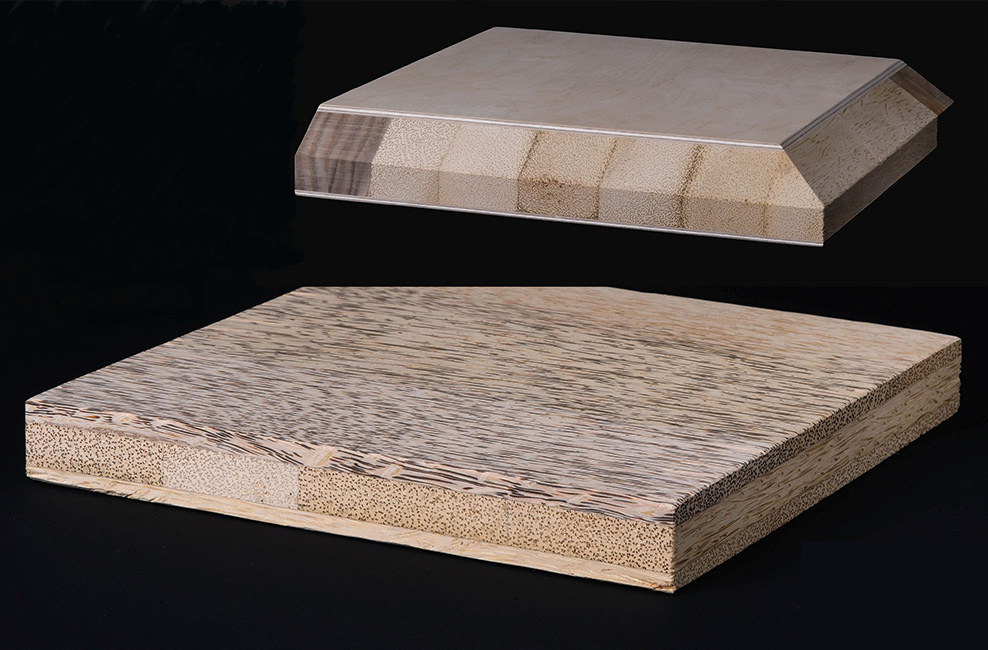The total world-wide plantation area for oil palms amounts to over 20 million hectares and is expected to increase. Oil palms are planted exclusively for palm oil used in the food and biochemical industries and for energy. But what happens to the tree after when the oil yield decreases?
Oil palm plantations are gradually being replanted as oil yield decreases. This occurs when the tree reaches an age of 15 to 20 years. Based on a planted area of about 20 million hectares, an average of 0.8 million hectares annually would have to be replanted. As a result, large volumes of the oil palm wood resource will accumulate in Asia, Africa and South America. Estimates forecast 120 million cubic meters of trunks per year. Presently, oil palm trunks are left to rot; chipped as fertilizer or burnt. All three procedures are highly detrimental for the environment.
The wood trunks are a valuable resource but there are some problems’ not the least of which is the high amount of water and silicone in the wood. Add to this the extreme density distribution and you have a completely different structure to what we know as “normal” wood. In fact, oil palms are not botanically classified as wood, but as grass. There is currently very little know-how in technology and knowledge in the processing of Oil Palm Wood. This is about to change as the Leitz Company embarks on a project where the objective is the best possible use of timber from unproductive, mature oil palms for the production of high value-added products such as single and multi-layer panels; block-boards; glulam in standard dimensions and cross laminated timber (CLT) in Thailand and Malaysia.
This resource exists as a result of the tree no longer being able to produce an economic oil yield. There was never any intention of it becoming a wood crop but the use of oil palm trunks can significantly reduce the pressure on natural forests by reducing logging there. In Asia only small amounts of Rubber-wood result from plantations so the risk of illegal logging from native forests is high. The results of this project will lead to the conservation of native forests; more jobs; climate protection and income for the companies that will eventually process the new wood resource.
Many companies and institutions have joined in the international network “PalmwoodNet” in a multi-stakeholder approach for this project. Members are the five core partners Jowat SE; Minda Industrieanlagen GmbH; Möhringer Anlagenbau GmbH; Wiesentheid; Leitz GmbH + Co. KG together with Boehlerit GmbH & Co. KG, and Palmwood R+D, as well as several German universities and other industry partners including some from Thailand and Malaysia. Leitz and Boehlerit will work on the development of the cutting and hogging process to produce the planned products of oil palm wood. Among these particularly are the development of suitable cutting materials and tools to achieve the required quality and efficiency of cutting processes.
Funds provided by the German Federal Ministry for Economic Cooperation and Development were allocated in November 2015 under the leadership of the project coordinator Jowat; whose products are sold in Australia by Surteco. Currently under investigation are the products suitable for the new wood; sawing and drying; machinery and cutting tools; ecological supply issues and an assessment of the wood and processes for competitiveness. Eventually the new material will be available World-wide.

